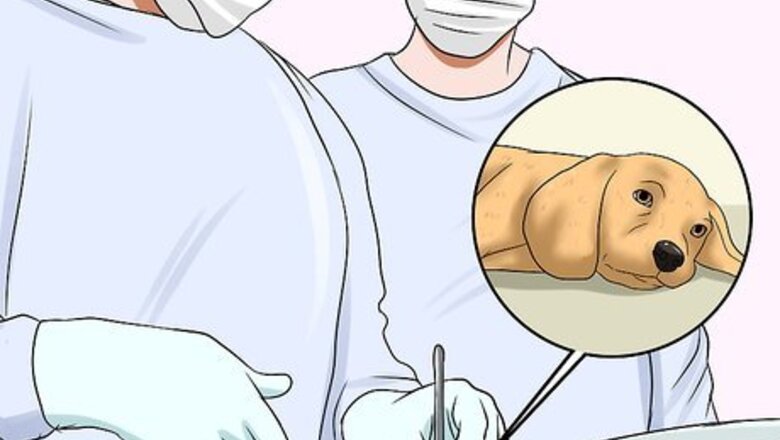
views
Preventing Dog Bites
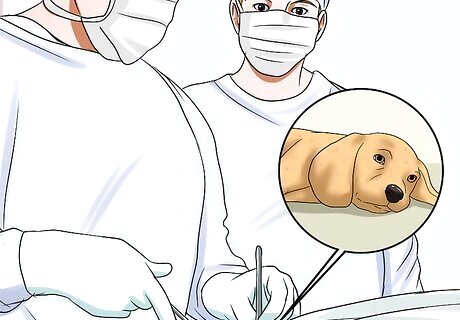
Spay or neuter your dog. There are many different reasons in support of spaying or neutering your dog. Among those reasons is the fact that they will be far less likely to bite. Spaying and neutering will change hormonal levels in your dog, resulting in more docile and calm behavior. Your dog's instinct to wander or fight with other dogs will be reduced. Neutering your dog lowers testosterone levels, making male dogs less aggressive therefore they bite less.
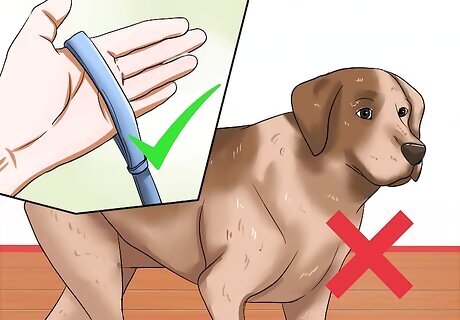
Don't let your dog wander off by itself without proper supervision or go off-leash. Making sure that your dog is safely contained in his own yard is part of being a responsible pet owner. Keeping your dog in a limited and safe space will help protect not only your dog, but other pets and people as well. Do not let your dog roam freely. If your dog is prone to biting and/or has strong prey and hunting instincts, make sure that when you walk it, it wears a muzzle. This will prevent the dog trying to pursue wild animals or other dogs. Keeping your dog contained lowers the chance of them encountering and fighting other pets. Being kept secure will also lower your dog's chances of biting during a hunt.
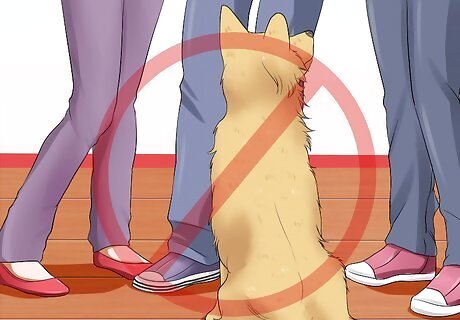
Avoid stressful situations. If you know your dog may bite, or suspect they may, avoid any unnecessarily stressful situations. Do not introduce your dog to new or busy places. Watch your dog's behavior at all times for signs of stress and leave the area immediately if you see them manifesting. Don't introduce too many new people if that seems to be stressful for your dog. Large crowds can stress dogs out. Try to avoid bringing your dog to these if they are nervous. Avoiding stressful situations works. However, you may still want to train your dog to relax in them. Have a safe space where your dog can go and relax.
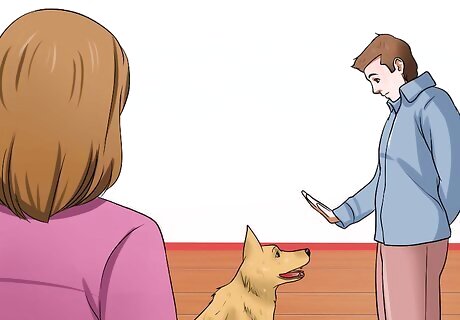
Go to obedience training with your dog. Going to obedience training classes with your pet is one of the best ways to prevent dog bites. These classes will teach both you and your dog how to work together to avoid biting. Your dog will be socialized with other dogs and people. Your dog will learn how to deal with any fears it may have. You will learn how to properly reward or punish behaviors. Expect that both you and your dog will be learning. Ask your veterinarian for recommendations for good obedience training classes.
Training to Stop Bites, Mouthing, and Nipping
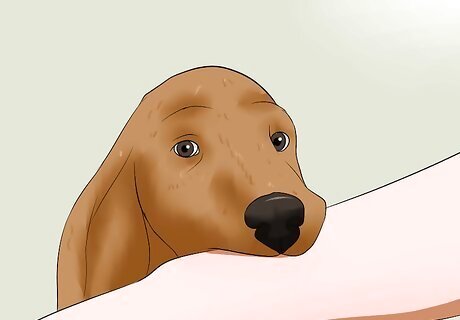
Determine if your dog's mouthing is playful or aggressive. All dogs, but especially puppies, engage in normal mouthing behavior. Learning the difference will help you to understand your dogs attitude. However, no form of biting or mouthing is acceptable and both must be stopped. Playful mouthing shouldn't hurt, and your dog should have relaxed body language. Aggressive biting will be accompanied by tense and stiff body language. Aggressive bites tend to be quicker, harder, and more painful.
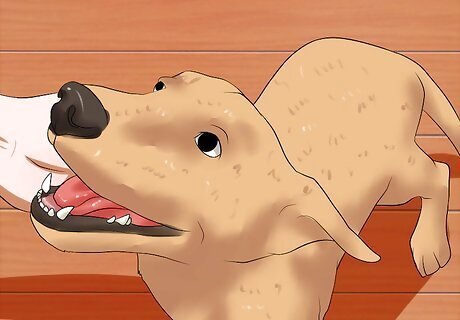
Teach your dog to be gentle with her teeth and mouth. Dogs are pack animals, and learn from playing with each other when they are young. It's normal for your puppy to play bite you, however, you will want to start training them to never bite. If you are bit or mouthed, don't say or do anything, since any response will just reinforce the behavior. Instead, wait for a moment you think your puppy is about to bite. Then, say "no" or "no bite." If he doesn't bite you, reward him with a treat and praise. Giving your puppy a command before he does something bad is the best way to help him learn better behavior. If the dog or puppy doesn't stop, leave and try again later.
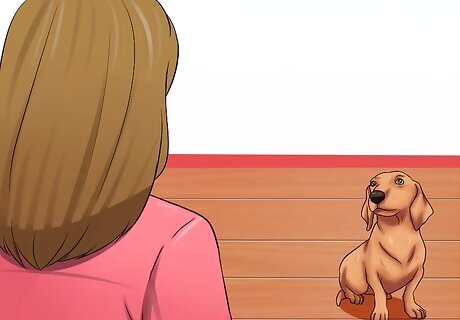
Use a time-out method to curb mouthing and nipping. If your puppy or older dog doesn't respond to simple yipping and short refusal to play, try adopting a time-out procedure. Ignoring your dog is a powerful way to communicate that its behavior is unacceptable. When bitten, yelp loudly. Ignore the dog for ten to twenty seconds. You may also place your dog in a space by itself for ten to twenty seconds.
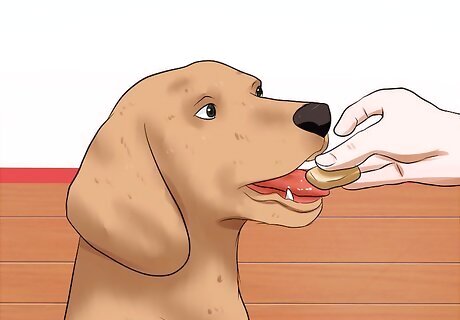
Reward your dog consistently for good behavior. It's important to let your dog know what he is doing correctly. Always be sure to praise your pet for stopping to nip and bite, either with pets or small treats. Reward only behavior that you want to encourage. Keep treats handy so that you can reward easily when training your dog. Don't overfeed your dog, use only small treats.
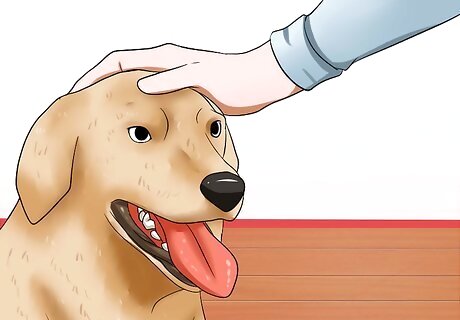
Continue to teach your dog to be gentle. Your dog will start to nip more lightly. Keep yipping and stopping play, whenever you dog nips. As your dog reduces pressure, respond by yipping to the lighter nips. Keep working in this way until your dog stops nipping with any pressure.
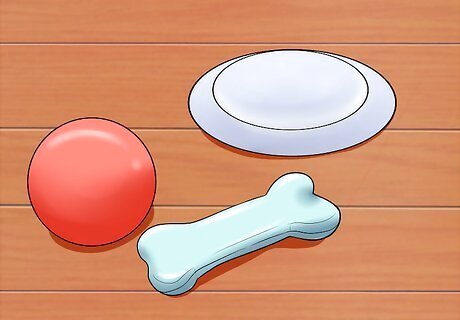
Select your dog's toys and games carefully. It's only natural to want to wrestle with your dog or play tug of war. However, we send our dogs mixed messages when do this, and make it harder for them to learn to curb their biting instincts. Instead of letting your puppy gnaw on your fingers or hands, give him a chew toy or bone. Avoid wrestling games, which can get your dog overly excited or confused. Think carefully about playing tug-of-war. This can lead to dominance issues. Be sure to talk to your veterinarian or trainer about how to teach your dog to play tug-of-war.
Responding to Serious Biting Behavior
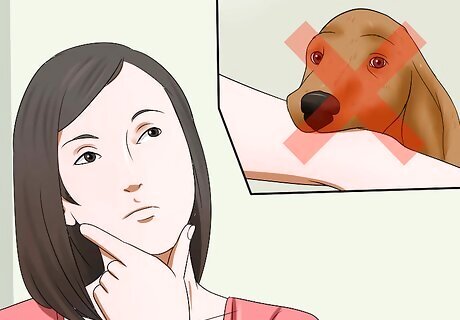
Rule out playful biting. Playful biting can be remedied by simple training that you can do at home. If your dog is showing signs of aggression, however, this is a more serious problem. Aggressive biting will hurt, much more so than play biting. Your dog will have tense or stiff body language.
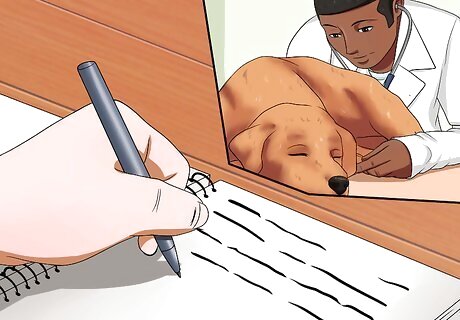
Enlist the help of your veterinarian. If your dog shows signs of aggression, you ought to seek professional help immediately. Your vet can help you find the source of your dog's aggressive biting. Your vet can help you care for any ailments that may be causing biting. Your vet can also teach you how to properly reward or punish behaviors. Try speaking with a qualified pet behaviorist to better understand how to train your dog.
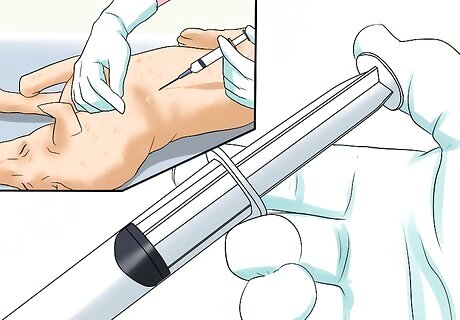
Keep your dog's vaccinations current. With proper training, your dog will hopefully never bite you or a stranger. However, this possibility cannot be ruled out. It's very important that you keep your dog's vaccinations and paperwork up-to-date in case someone is bitten. Keeping vaccinations current can help protect the victim from disease. You will have less liability in the event of a bite if your dog's vaccinations are up to date. Keep your dog safe, as many states destroy un-vaccinated dogs that bite. Practice responsible pet ownership. Never unleash your dog in a public area. Use a muzzle when in public if your dog is prone to biting.
Understanding Why Dogs Bite
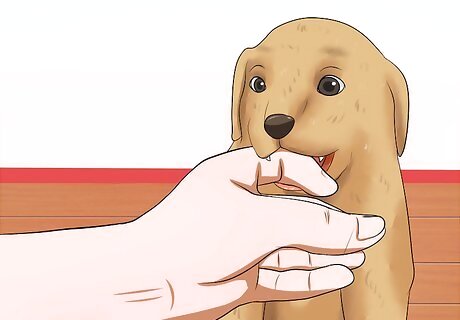
Distinguish the different types of biting behavior. Puppies and dogs use their mouths to play and investigate the world. In general, we can distinguish between mouthing, nipping, playful biting and more serious aggressive biting. Puppies will most often mouth or playfully nip. Although common behavior, it is unacceptable. Older dogs may also mouth and nip, if they were not trained otherwise. No matter the dog's age, teach them that it is never appropriate to put their teeth on a person. Aggressive biting, in either young or old dogs, needs to be addressed immediately.
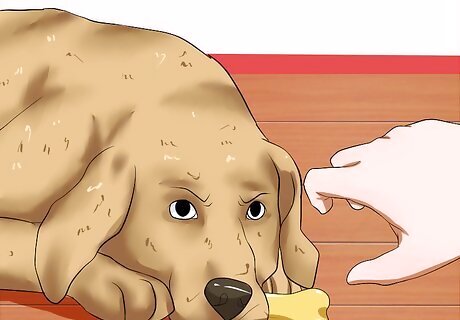
Look for signs of possessiveness in your dog. Dogs are protective of their possessions. They have a broad understanding of what is their property. If your dog feels that his possessions are being threatened, he may very well respond by biting. Dogs can view their toys, food, territory or even people as their property. Watch your dog around these things to see what might be triggering its behavior.
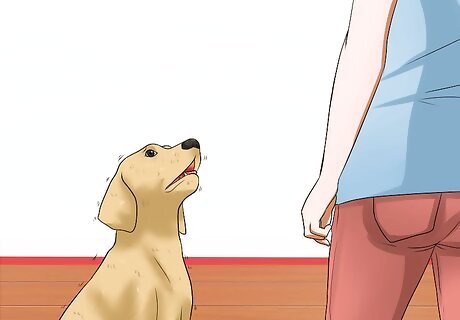
Look for signs of a fear response. Another common cause of biting behavior in dogs is fear. If your dog is acting fearful, try to think of anything that may be causing it, such as new people or new locations. Watch for the following signs in your dog's behavior that indicate fear: Trembling. Tucked tail. Submissive posture. Hiding. Running away.
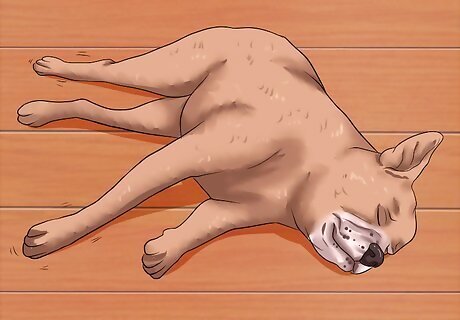
Determine if your puppy or dog is in pain. If your dog is nipping or biting, and it doesn't seem like play, they may be in pain. Even the calmest, friendliest dogs may be prompted to bite if they are in pain. If you suspect your dog to be in pain, take them to the vet immediately. Look for the following signs of pain in your dog: Whimpering. Changes in eating or drinking. Yelping. Groaning. Restlessness. Difficult moving. Limping.
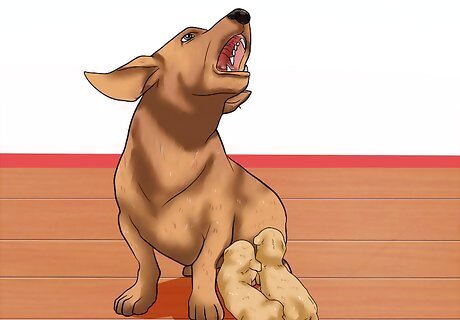
Understand that new mothers may bite. If your female dog is preparing to have a litter or has just whelped, then be on the alert for possible biting. The maternal instinct is strong in even the most loyal and calm dog, and so you'll want to be careful to not prompt any biting behavior on her part. Offer your dog a safe and secluded space. Approach the dog and her puppies carefully. Teach others to approach the mother and new puppies with caution.
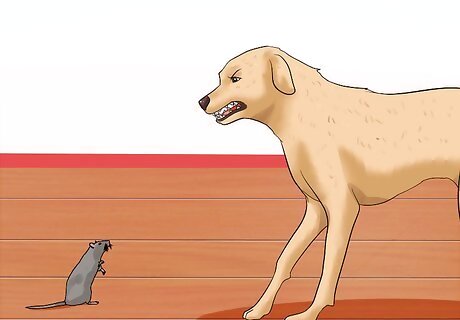
Determine if your dog is biting as a result of prey behavior. The predatory instinct in most dogs is very strong. If interrupted in their “hunt”, they may bite. If you think that your dog is biting as a result of this predatory instinct, you'll want to address it for everyone’s safety. Dogs may consider the following to be prey: Wildlife, such as rabbits or squirrels. Cars Joggers Cyclists
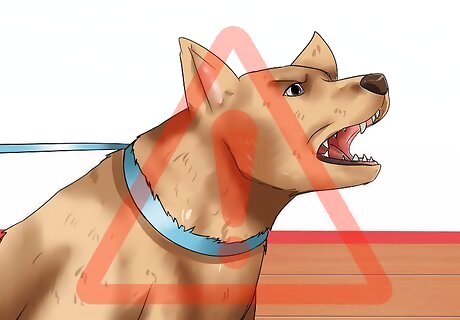
Recognize the warning signs of an impending bite. If you have ruled out the possibility that your puppy or older dog is mouthing or nipping playfully, you may be faced with dealing with more aggressive behavior. Aggressive behavior is dangerous to work with. Learn the following signs of aggression in your dog. Ears pinned back. Fur along back is standing up. You can see the whites of its eyes. The dog is showing its teeth.
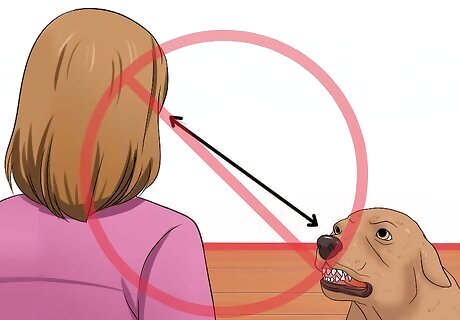
Know how to handle a dog that is about to bite. There are a few standard techniques that can help keep you from being bitten by a dog displaying signs of aggression. Follow these basic steps to help keep you safe from a dog bite: Avoid direct eye contact. Slowly step back from the dog. Give the dog an escape route.














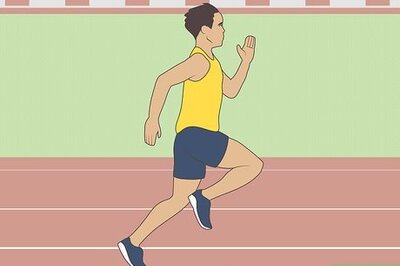




Comments
0 comment